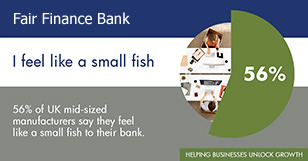
In the previous blogs in our UK trade briefing series we examined some of the findings from our report. Now we look at the UK’s fastest growing export sector, food and beverage.
This report was prepared in collaboration with Global Trade Review (GTR) and reveals that food and beverage exports are expected to grow at 6.3% a year to 2021. This is ahead of the aerospace, precious metals, automotive and pharmaceuticals sectors respectively (see figure one).
Data from the report shows food and beverage exports were worth $27.2bn in 2017 and the projected growth could generate an extra $1.7bn a year for the industry’s exports.
Figure one: the UK’s fastest growing export sectors
|
Rank (fastest growing) |
Sector |
Growth rate a year to 2021 (%) |
Value in 2017 (US$) |
Project growth per year (value US$) |
|
1 |
Food and beverage |
6.3% |
$27.2bn |
$1.7bn |
|
2 |
Aerospace |
3.7% |
$21.5bn |
$796m |
|
3 |
Precious metals |
2.3% |
$34.3bn |
$789m |
|
4 |
Automotive |
1.7% |
$54.7bn |
$930m |
|
5 |
Pharmaceuticals |
0.8% |
$32.9bn |
$263m |
|
Total |
|
|
$170.6bn |
$4.5bn |
Meanwhile, exports of the five fastest growing sectors were worth US$170.6bn last year. The projected growth means that these sectors could generate an extra US$4.5bn a year for UK exports to 2021.
Eat, drink and create jobs
The research also highlights the importance of the overall food and beverage sector. Food and drink manufacturing businesses accounted for £243bn in turnover and were responsible for more than 800,000 direct jobs in 2017.
It is the UK’s sixth largest export sector and the second largest food and beverage exporter globally after the US. However, the UK sector is highly domestic in focus with exports only accounting for 9% of the total production within the industry.
In addition, the UK imports an estimated 48% of the food and drink it consumes. Imports in 2017 were worth just over $60bn giving the UK a deficit of just under $33bn. The UK is the second largest importer of food and beverage by value – second again to the US.
As we can see, food and beverage businesses are important to the UK economy and the industry is a significant source of export growth over the next five years.
Some risks ahead
The research indicates there are some risks for this sector, however.
First, food prices have been rising since the middle of 2017. Some of this is the result of weaker sterling. However, prices rose by an average of 3.4% in the six months to March this year, suggesting inflation also. As a result, UK consumers are tightening their belts.
Second, the pressure on household incomes has helped the entry of new, low cost competitors in the market. These companies are now established among consumers and food and drinks manufacturers will need to adapt their costs and profit structure accordingly.
Third, new regulations will impact the sector. The recent sugar tax will have a short-term effect of pushing up prices while alternatives are found. This may affect both the output of the sector and the level of imported sugar from abroad.
But the research suggests that some of these risks will be offset by the growth in overseas markets outside of Europe. These markets form a significant part of the sector’s export profile.
Looking at individual firms within the sector, the research shows that SMEs account for more than half of the businesses in the food and beverage industry.
While this is encouraging, few SMEs are able to access structured finance solutions.
So, in order for this sector and the SMEs within it to continue to succeed, they need working capital. This is especially important within the food and beverage sector given the relatively short shelf-life of products.
It is only by providing better access to funding that we can support businesses to trade, grow and create jobs.
To read more about the research, please see our UK trade briefing report: https://www.kdb-uk.com/uk-trade-briefing-2018/
****
This research was initially published in our UK trade briefing 2018 report, on which this blog and the data within is based. The sources for the research include the United Nations, Eurostat, the OECD and customs and excise data as well as UK Office of National Statistics data. The analysis is based on the trends and patterns in trade flows which it projects forward. It does not account for potential political or policy changes.
The information in this article is not the opinion of KDB Bank but based on the research commissioned and data provided by Global Trade Review in March 2018


